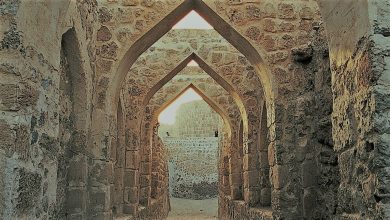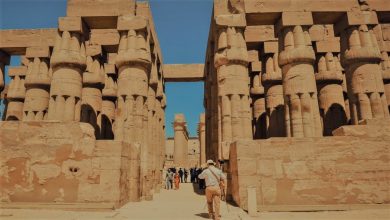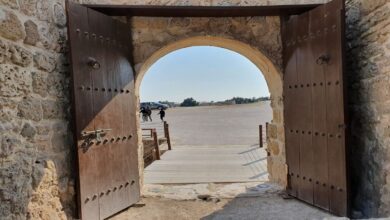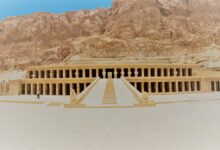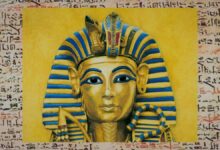The Serapeum at Saqqara.. and the Astonishing Myth Behind the Apis Bull
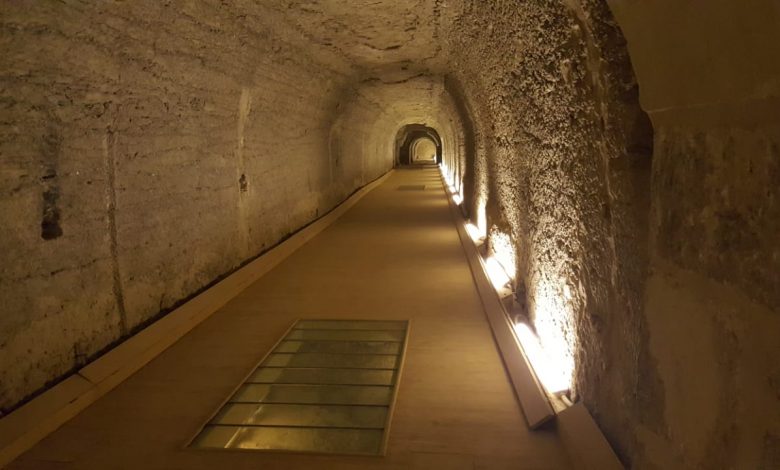
The Serapeum
The Serapeum was associated with the story of the ancient sacred Pharaonic deity “the Apis bull”.
The bulls were one of the most important animal deities whose worship was spread throughout the history of ancient Egyptian civilization, and even extended to the era of the Ptolemaic kings who inherited the rule of Egypt after the death of Alexander the Great.
The bull Apis is one of the most famous bulls that the ancient Egyptians sanctified and which was worshiped in the city of Memphis, the ancient capital of Egypt that is currently located in the village of Mit Rahina in the Giza Governorate.
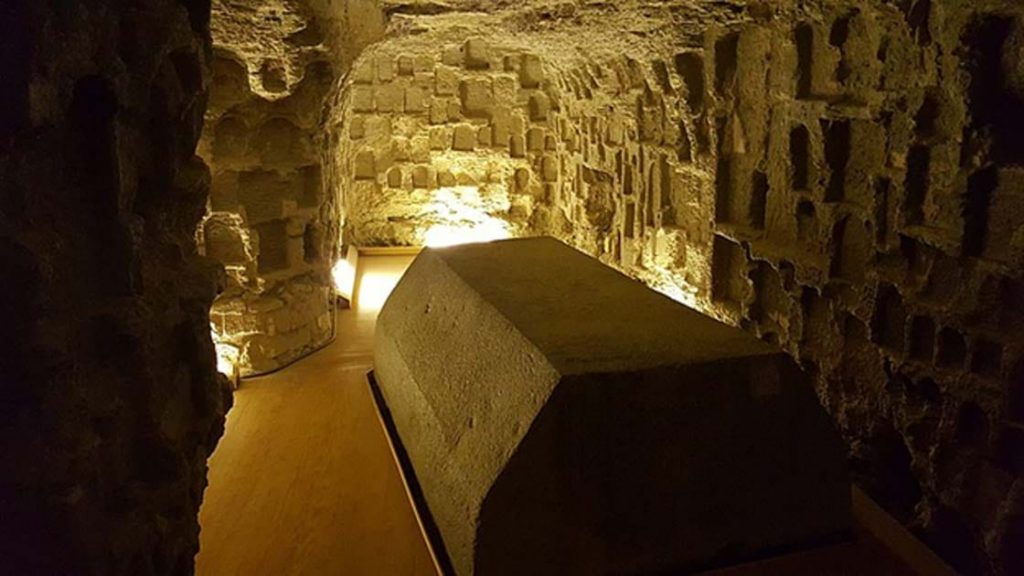
Apis was worshiped in temples that are known as the Serapeum. There are two temples under the same name of Serapeum, the first one was built by them in the Ptolemaic period in their capital Alexandria, and the second one dates back to the late era of the ancient Egyptian civilization which was destroyed by the movement of the Western Desert, leaving nothing but the tombs that contained the mummies of the bull Apis.
Here is the story…
You can click on this link to read the article in Arabic
The Apis Bull
The ancient Egyptians chose the Apis bull from among other bulls according to their belief and specific vision about how the sacred bull should be chosen. This vision includes that the bull should be the only single one of its mother, and that there is a flash or lightning that descends from the sky on one of the cows which will give birth to this sacred bull.
The sacred bull has a white square mark on its forehead, and its tail is a mixture of white and black hair. On its tongue, a drawing of the sacred scarab symbolizing the sun God Ra should be present, and on its back there is a drawing of an eagle. If these conditions are met, the bull becomes their sacred idol, Apis.
According to the Egyptians belief at that time, they celebrated every year the birthday of the bull Apis for a period of seven days, and after the bull’s death, women would wear mourning clothes and only drink water and eat vegetables throughout that period. After that, the fasting period is declared in Egypt for seventy days until the Apis bull gets buried inside the temple.
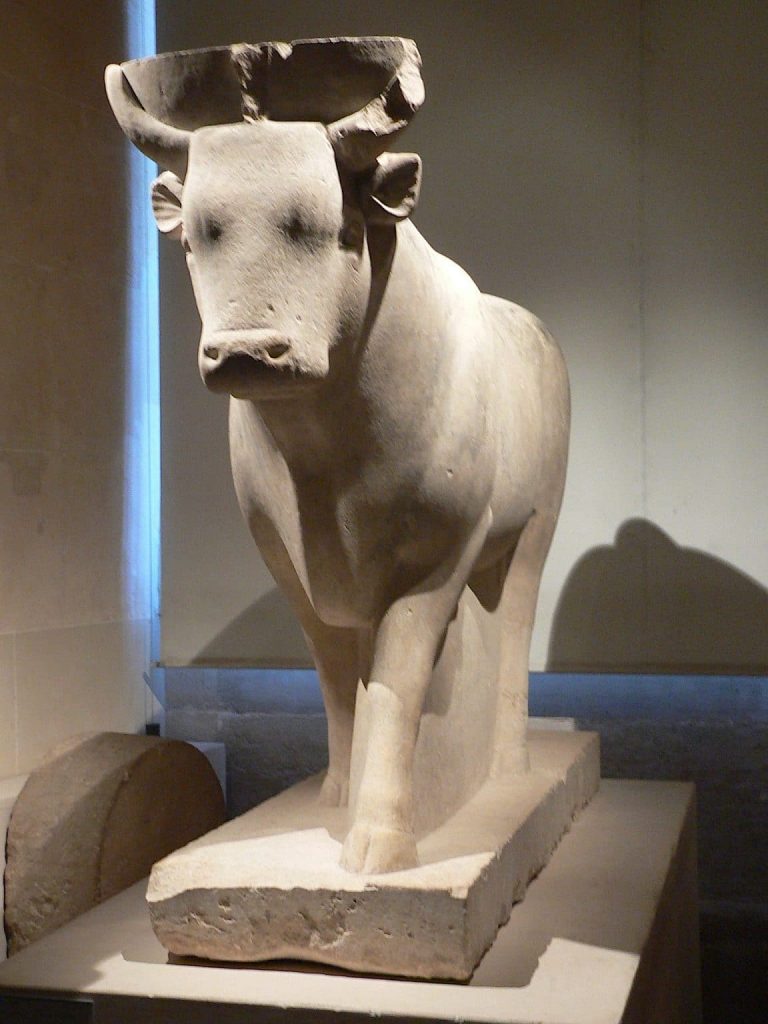
Apis was granted a fame that many deities did not attain, as it is the spirit of the God “Ptah”, which is the main God of the city of Memphis and is also considered as one of the messengers of the God “Osiris” which is the God of the dead and the underworld.
In the era of the Ptolemaic kings, Apis became the official idol of Egypt, and was worshiped under the name “Serapis”, which is the name from which the word “Serapeum” got derived.
The Discovery of the Serapeum
The importance of the sacred bull among the ancient Egyptians and the Ptolemies left a confusion for the French archaeologist, Auguste Mariette, about the discovery of this tomb in which the biography was mentioned in the writings of travelers and ancient historians.
Mariette visited Egypt in the year 1850 AD, upon commission from the French government to collect and purchase ancient Coptic manuscripts in order to be displayed in the manuscript collection of the Louvre Museum in Paris.
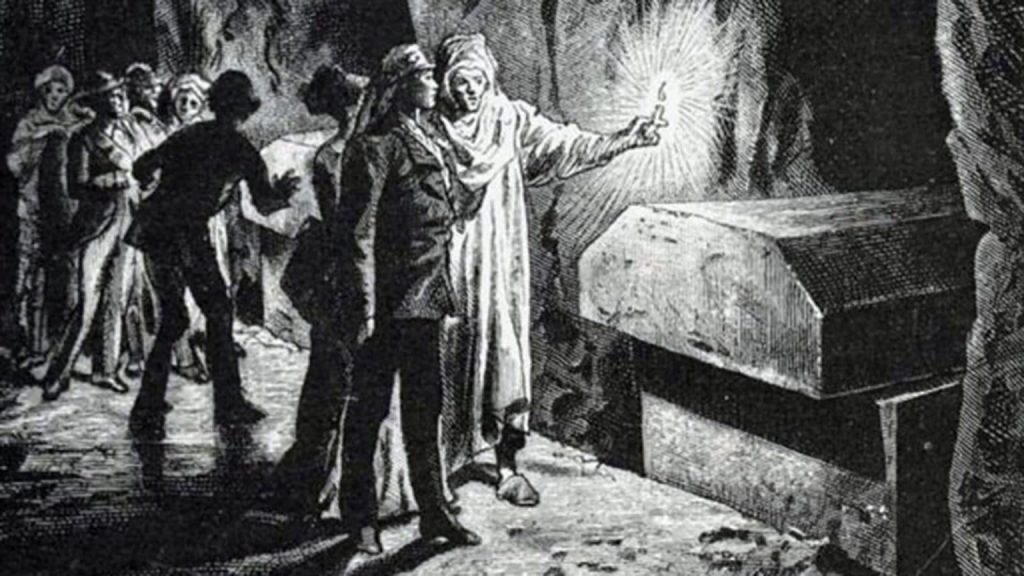
But Mariette’s passion for the great Egyptian civilization is greater than the mission assigned to him. He mentioned in his book about the story of his discovery of the Serapeum by saying: “One day I went up to the Citadel of Saladin and I began to contemplate the Egyptian desert and the pyramids of Giza. Then I started thinking about what the ancient travelers and historians such as Strabo who wrote about a temple that was at the stepped pyramid which had a row inserted with statues of the Sphinx made of gold and was dedicated to the worship of the holy Apis bull. However this temple disappeared as it was swallowed up by the Western Sahara.”
At these moments, his curiosity to reach that Serapeum overwhelmed his primary mission.
Mariette mentioned that he had hired three donkeys to carry him and his bags along with a couple of workers to discover this mythical place, and after a year of excavation in 1851 AD, he was able to access to the entrance of the Serapeum.
The discovery of the French scientist August Mariette, which is the Serapeum and the story about the legend of the bull associated with this temple has baffled the scientists and became a great event, no less than the discovery of the tomb of the king of kings Tutankhamun. However, finding the temple was not the only major event, but trying to understand how its passages was build and the discovery of its coffins is what still baffles Egyptologists till this day.
Mysteries of the Serapeum
When August Mariette discovered the entrance to the Serapeum, he found that the site is a group of corridors that are 10 meters below the ground level. The main entrance consists of long and round corridors carved into the rock of the land.
He also discovered a bunch of wooden coffins that were used to bury the sacred bulls, in which he found out that all the mummies inside these coffins were decomposed and their gold jewelry had been stolen.
The corridors contained openings for complaints in which Mariette found a group of papyri and paintings related to the worship of the bull Apis in Egypt along with the rituals associated with it. These include the characteristics that must be available in the bull in order for it to become sacred. He also found a couple of tombstones on which some history about the bulls was written on them like the dates of their birth and death.
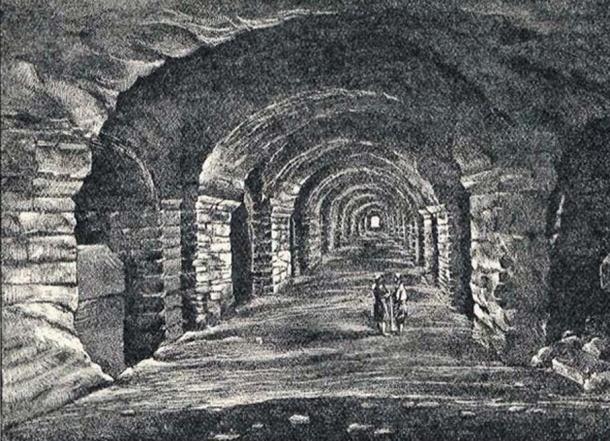
Coffins of the Serapeum
The discovery of 24 granite and basalt sarcophagi inside the tombs is one of the biggest mysteries of the Serapeum because the huge coffin weighs about 70 tons which raises the scientist’s curiosity about how did these huge coffins enter into the narrow underground corridors? And the answer to this question remains unresolved.
The French scientist Auguste Mariette found that all the existing coffins were open and free from the mummies of calves, and this made him question whether these coffins were stolen or were they empty from the beginning? With that being said, he found a single closed coffin which made him set his hope that this would be the only coffin that had not been looted, so he tried to open it with the help of some workers, but it did not work out, so he had to use dynamite to blow up a part of the coffin in which the decomposing mummy of the bull Apis was found.
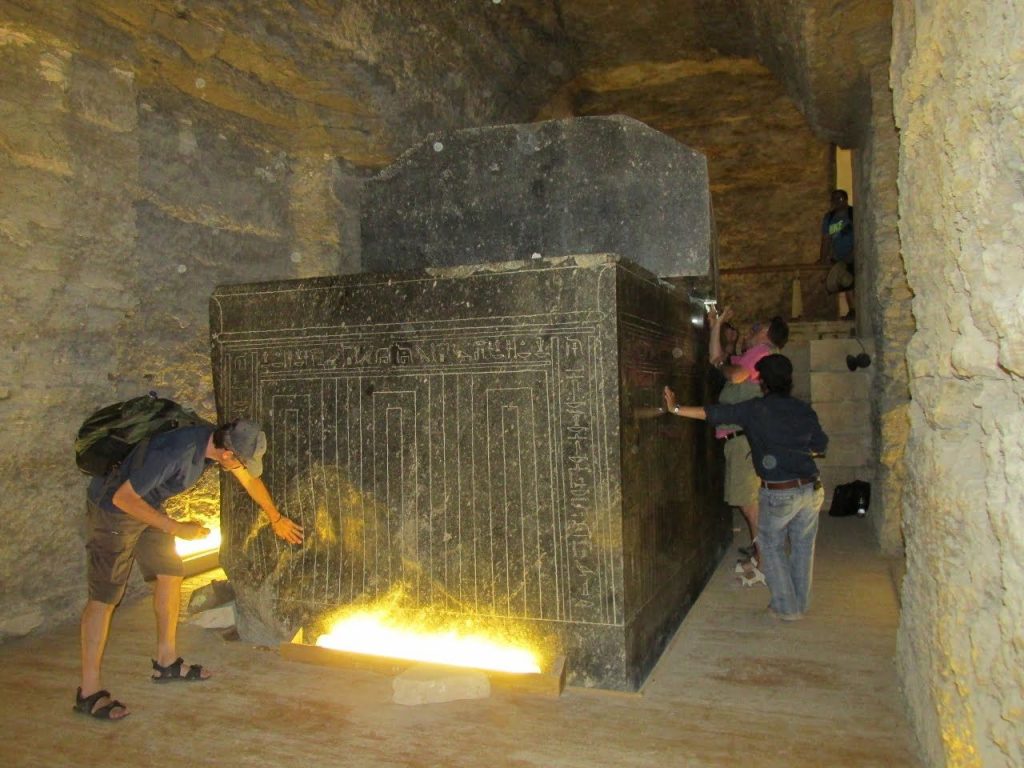
In the middle hall, a wooden coffin was found and had a mummy of a person present in it. The upper part of the coffin was broken, but the funeral group of the mummy was untouched. The coffin included a gold mask and a bit of amulets, gold, and stone necklaces, all bearing the name of Prince Khaemweset, who is the son of King Ramses II. The archaeologists believe that it was one of the remains of the bull Apis which got formed into the image of a human being with a mask of Prince Khaemweset placed on it.
Multiple Statues of the Apis bull along with Canopic vessels that are usually placed on the dead, and the remains of Apis were also found there. This information is according to what the French scientist had mentioned in his book, which is considered the main reference to the story of the Serapeum.
Visiting the Serapeum
The mysteries and secrets of the Serapeum do not have definitive answers, especially about how was this site built knowing that it needs huge equipment to be dug into the ground? And where did the mummies of the sacred bull go if this was his burial? How were these coffins built? And how was it carried underground? The lack of answers to these questions made the Serapeum become the most important stop for a visitor to visit at the Saqqara area of Egypt.
Serapeum Prices
Foreigners:
Adults: 150 EGP.
Students: 75 EGP.
Egyptians and Arabs:
Adults: 20 EGP.
Students: 5 EGP.
Car Tickets:
Taxi: 5 EGP.
Minibus: 10 EGP.
Bus: 20 EGP.
Visit Timing
From eight in the morning till five in the evening.
